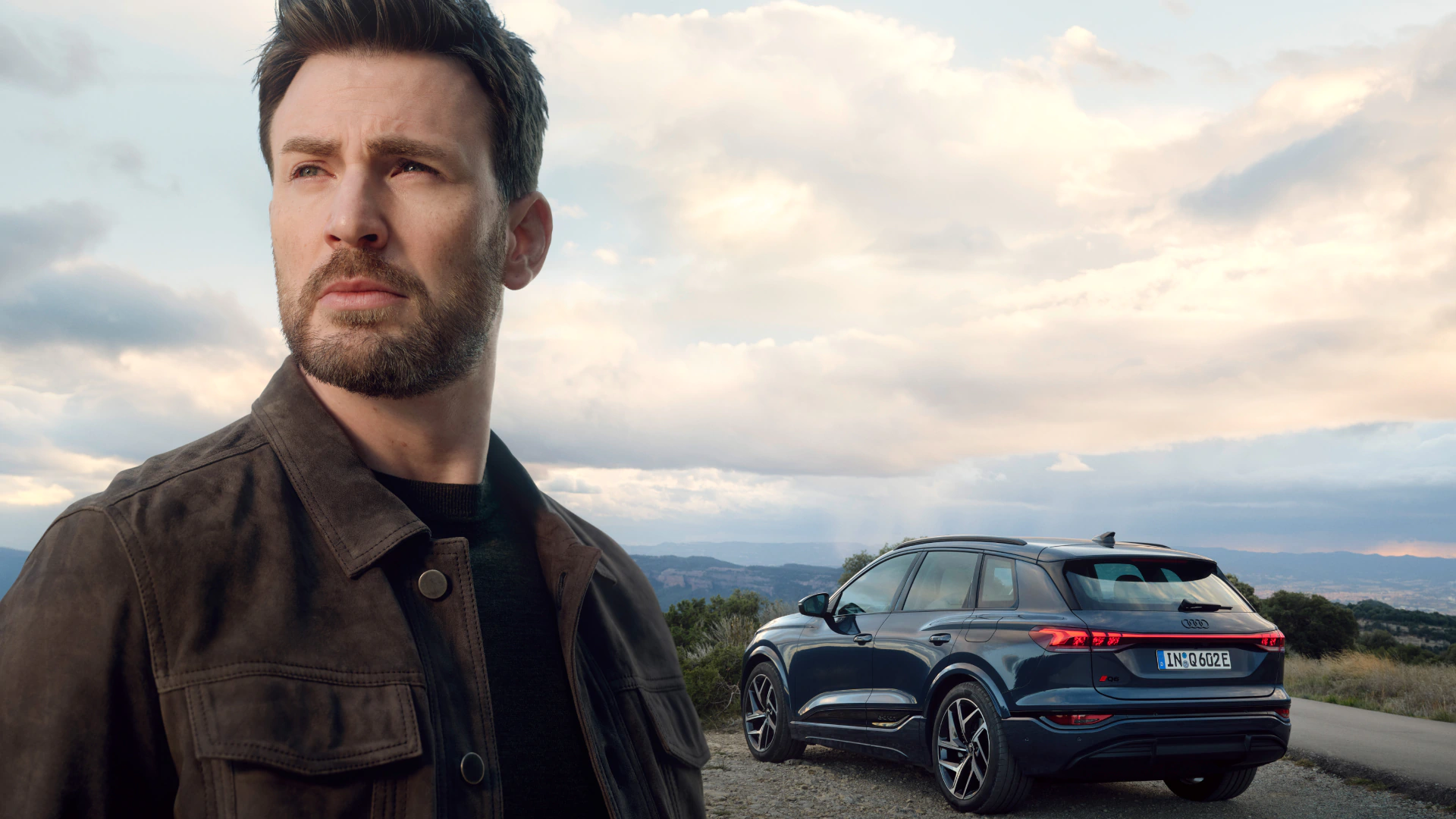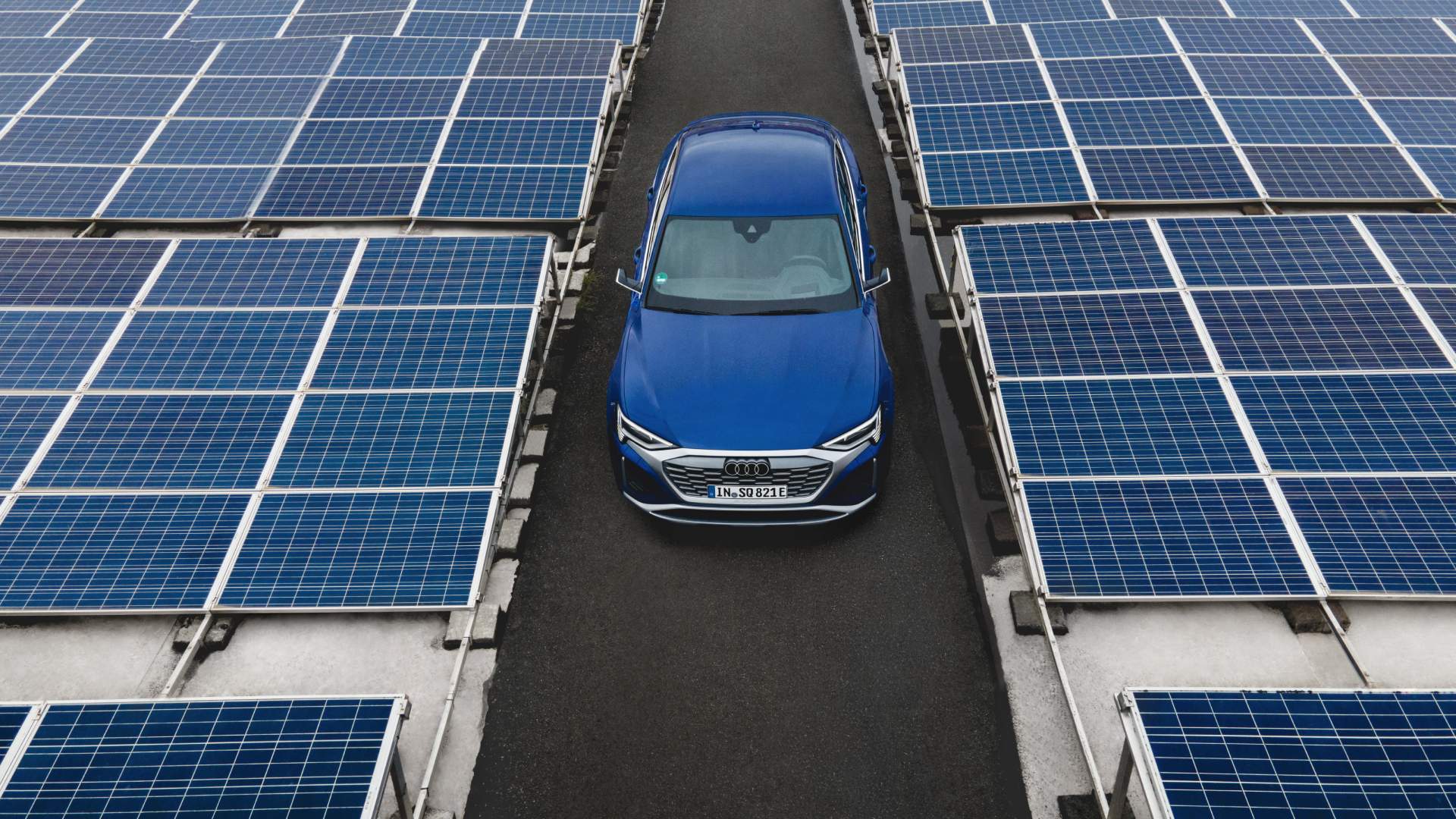“Every now and then we should move out of our comfort zone”
Sebastian Copeland campaigns for climate protection. The fact that he uses a car in his private life is no contradiction for him – as long as it is electrically powered, as he explains in this Audi e-tron Story.
Only consumption and emission values according to WLTP and not according to NEDC are available for the vehicle.

In the “Audi e-tron Stories”, drivers provide an insight into what excites them about electromobility. In this episode, join polar explorer and climate advocate Sebastian Copeland in his Audi e-tron S Sportback, as he prepares for his upcoming Antarctic expedition.
In the “Audi e-tron Stories”, drivers provide an insight into what excites them about electromobility. In this episode, join polar explorer and climate advocate Sebastian Copeland in his Audi e-tron S Sportback, as he prepares for his upcoming Antarctic expedition.
For a moment, Sebastian Copeland disappears into snowy Perlacher Forst. It takes some time before the 58-year-old’s yellow jacket can be recognised in the undergrowth again. Copeland spends hours training in the forest regardless of the weather and the season. Right now, however, he is beating his way through the snow on cross-country skis in preparation for his next expedition to the South Pole.
Sebastian Copeland is a climate analyst, having studied geology and glaciology among other things. At the same time, he is a photographer, author and polar explorer, and he can confidently be called an adventurer – one with a mission: For the last twenty-five years, he has campaigned for climate protection. He crossed Greenland and Antarctica and reached the geographic North Pole on foot. “Nature has a voice. To hear that voice, you need to understand the language.”

Sebastian Copeland spends hours training in the forest regardless of the weather and the season. Here, he is beating his way through the snow on cross-country skis.

His personal interest in environmental research and analytics and his relentless advocacy for a sustainable future have led Sebastian Copeland to focus on visual arts as a tool for social change.
Sebastian Copeland spends hours training in the forest regardless of the weather and the season. Here, he is beating his way through the snow on cross-country skis.
His personal interest in environmental research and analytics and his relentless advocacy for a sustainable future have led Sebastian Copeland to focus on visual arts as a tool for social change.
He uses his camera to capture what he experiences along the way. “My photos,” he says, “are a tool that helps translate nature’s voice into human emotions. We are not all scientists, who can read and interpret data and models. And only very few of us have the privilege to see some of the places that I had the chance to see.” And that’s why there are documentary films and books about Sebastian Copeland’s expeditions, many of which have won international awards. Through lectures and exhibitions, the explorer shares his experiences, and makes the distant latitudes accessible to society. “The incredible beauty of nature that speaks from interpretive images should reach the heart, and then the mind of a broad public, and hopefully lead to a programme of action.”
Some of his photographs were also exhibited in 2021 and 2022 at the Audi stand at the Greentech Festival, which aims to promote ideas for a sustainable lifestyle. Copeland has had a partnership with Audi for the past two years, although the term “sustainability” seems too short-sighted to him. “It’s become a buzz word. To me, sustainability is ready for an upgrade. It’s good; but no longer enough. More accurately, we need to regenerate the whole system.

As an international speaker on climate crisis, Copeland has been featured on television and radio and has, among others, addressed audiences at the United Nations and at the COP21 in Paris. Some of his photographs were also exhibited at the Audi stand at the Greentech Festival.
As an international speaker on climate crisis, Copeland has been featured on television and radio and has, among others, addressed audiences at the United Nations and at the COP21 in Paris. Some of his photographs were also exhibited at the Audi stand at the Greentech Festival.
You must always remember this, he says. “Every now and then,” he explains as he’s stowing his equipment in his blue Audi e-tron Sportback after the training tour through the Munich woods, “we should move out of our comfort zone, leave our individual reality. Because this reality, factoring the 8.7 million known species on planet Earth, is very exclusive.” Connection, he says, transforms perceptions. But it’s not necessary to visit remote, extreme places to connect with nature. “A walk through the park is already a good start”, he assures.
“My children probably won’t remember what a non-electrified vehicle sounds like. A fascinating thought.”
Sebastian Copeland

When it comes to mobility, for Copeland it’s not about renunciation, but about responsibility. He rides his bike a lot. But his car sometimes offers him a time advantage. And time is a precious commodity to him.

But when he goes by car, it must have the lowest immediate impact. Electromobility is a key technology for him to achieve one of the most urgent goals: to reduce ongoing carbon emissions.
When it comes to mobility, for Copeland it’s not about renunciation, but about responsibility. He rides his bike a lot. But his car sometimes offers him a time advantage. And time is a precious commodity to him.
But when he goes by car, it must have the lowest immediate impact. Electromobility is a key technology for him to achieve one of the most urgent goals: to reduce ongoing carbon emissions.
Nonetheless, when it comes to mobility, for Copeland it’s not about renunciation, but about responsibility. “Looking back in history, carbon molecules have generated progress that expanded our life span, our quality of life and knowledge, and our engineering capabilities. Without it, we probably wouldn’t have penicillin, for example.” The idea is not to go back to the Stone Age but to learn from the past to avoid mistakes in the future. His two young children probably won't remember what a non-electrified vehicle sounds like. “And that”, he says, while connecting his Audi e-tron to the wall box in his garage, “is a fascinating and motivating thought, isn’t it?”

Copeland often charges his Audi e-tron S Sportback at his wall box at home. The range is not a problem for him in everyday life.

The Audi e-tron S Sportback offers a charging socket on both the left and right side. The green light indicates that it is charging.
Copeland often charges his Audi e-tron S Sportback at his wall box at home. The range is not a problem for him in everyday life.
The Audi e-tron S Sportback offers a charging socket on both the left and right side. The green light indicates that it is charging.
“We should celebrate great engineering”
Sebastian Copeland describes himself as a marketer; and his brand is nature. Electromobility is a key technology for him to achieve one of the most urgent goals: to reduce ongoing carbon emissions.
Three questions on electromobility for Sebastian Copeland
01. How do you assess electromobility as such?
Electromobility is the perfect tool to transition to a low-impact transportation industry. I don’t think that it will be the final say on mobility, and before transitioning, it needs to be further optimised. And there is no time to waste.
02. And how do you perceive the current development?
It is remarkable how it evolved. A few years ago, I would have had no trouble finding a parking space designated for e-vehicles in Munich. Today, however, it’s not that easy anymore. Are we doing enough to regenerate the planet? Probably not, but we should celebrate the great engineering that helps us get there.
03. So, driving a car is no contradiction?
Not driving a car is not necessarily the answer, I’d say. Too many people depend on cars. To me, it is more about behaviour than prohibitions. I ride my bike a lot. But my car sometimes offers me a time advantage. And time is a precious commodity. But when I go by car, it must have the lowest immediate impact




